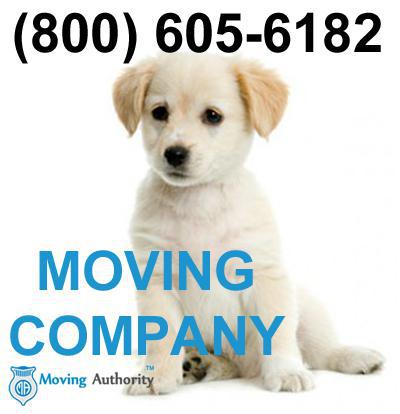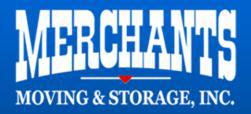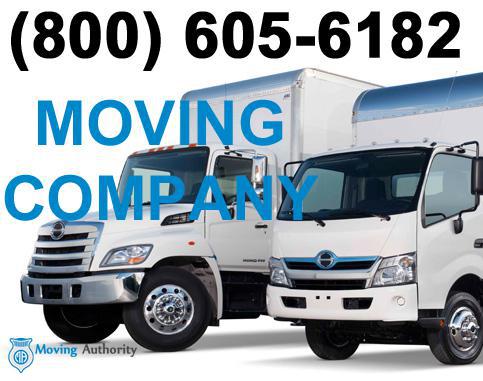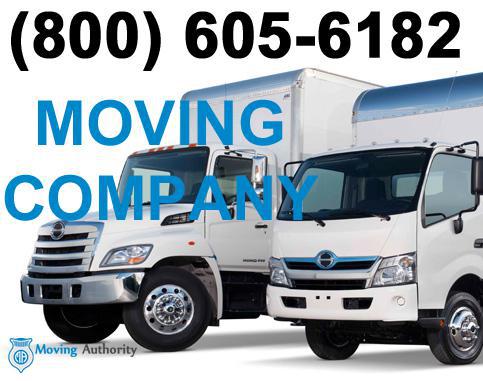LAST REVIEW
<QuerySet [<Review: Jo singh, Great company, >, <Review: David, The guy Chris r>, <Review: Jay, Great move from>, <Review: Eric, Excellent compa>, <Review: Eric, Excellent compa>, <Review: Chris, awesome movers>]>
5
1
4
Reviewed <QuerySet [<Review: Jo singh, Great company, >, <Review: David, The guy Chris r>, <Review: Jay, Great move from>, <Review: Eric, Excellent compa>, <Review: Eric, Excellent compa>, <Review: Chris, awesome movers>]> times,
customer satisfaction.
United States
Washington
Redondo
LAST REVIEW
<QuerySet [<Review: tracy vo, awesome experie>, <Review: Debra Everson, I was very impr>, <Review: Sharon Greene, We chose Grandm>, <Review: roseann doctaroe, Out standing jo>, <Review: Debra everson, I was very impr>]>
5
1
5
Reviewed <QuerySet [<Review: tracy vo, awesome experie>, <Review: Debra Everson, I was very impr>, <Review: Sharon Greene, We chose Grandm>, <Review: roseann doctaroe, Out standing jo>, <Review: Debra everson, I was very impr>]> times,
customer satisfaction.
United States
Washington
Redondo
I was very impressed with David's customer service: he was professional and obviously very interested in making sure I had my questions answered. The team was timely, efficient and very conscientious of our belongings. They were also flexible in delivering a couch we had to a friend in the neighborhood and were in good humor when there were some unexpected complications. I would definitely recommend this company to others. Their rates were also extremely reasonable which was an added plus.
LAST REVIEW
<QuerySet [<Review: Erhard G, They were alrig>, <Review: Violet W., Try not to util>, <Review: Frederick Mezick, I found that th>, <Review: Martin C, I used American>, <Review: Caroline, I moved to Hono>]>
5
1
3
Reviewed <QuerySet [<Review: Erhard G, They were alrig>, <Review: Violet W., Try not to util>, <Review: Frederick Mezick, I found that th>, <Review: Martin C, I used American>, <Review: Caroline, I moved to Hono>]> times,
customer satisfaction.
United States
Washington
Redondo
I moved to Honolulu and was happy with all. Crews on both ends were nice and professional. My move was probably small compared to most, but I was happy with my decision to use this company.
LAST REVIEW
<QuerySet [<Review: A C., My wife and I r>, <Review: hello, The Best Compan>, <Review: Luke Lyons, These folks dea>, <Review: Sharon S, I just complete>, <Review: Jesse J, To make a long >]>
5
1
4
Reviewed <QuerySet [<Review: A C., My wife and I r>, <Review: hello, The Best Compan>, <Review: Luke Lyons, These folks dea>, <Review: Sharon S, I just complete>, <Review: Jesse J, To make a long >]> times,
customer satisfaction.
United States
Washington
Dufur
To make a long story short it's a SCAM. This is not a genuine company. I'm at fault for dawdling yet they're simply awful people.
For my situation they didn't appear by any stretch of the imagination, and afterward the following day let me know they wouldn't discount my store. The lady on the telephone didn't have an intelligent clarification, or a statement of regret, she simply said "stores are non-refundable." I was left holding up to move my stuff and did it without anyone's help the next day with a leased truck.
I needed to get my bank included to recover MY cash.
Additionally, please take note of that the positive surveys on here are fake and composed by them. The same name that gives a gleaming survey is utilized somewhere else.
Much obliged and good fortunes moving.
LAST REVIEW
<QuerySet [<Review: Jane J., We chose to uti>, <Review: Alice K., Had an awesome >, <Review: Bill Marx, This was a nigh>, <Review: Greg, They did a grea>]>
5
1
4
Reviewed <QuerySet [<Review: Jane J., We chose to uti>, <Review: Alice K., Had an awesome >, <Review: Bill Marx, This was a nigh>, <Review: Greg, They did a grea>]> times,
customer satisfaction.
United States
Washington
Edmonds
LAST REVIEW
<QuerySet [<Review: Barbara Gayle, 0 out 0f a 5 po>, <Review: Barbara Gayle, This company li>, <Review: Barbara Gayle, This company li>, <Review: Barbara Gayle, 0 out 0f a 5 po>]>
5
1
1
Reviewed <QuerySet [<Review: Barbara Gayle, 0 out 0f a 5 po>, <Review: Barbara Gayle, This company li>, <Review: Barbara Gayle, This company li>, <Review: Barbara Gayle, 0 out 0f a 5 po>]> times,
customer satisfaction.
United States
Washington
Redondo
0 out 0f a 5 point scale. Do not use this company. Their employees lie about calling you and leaving a voice mail. With a cell phone ALL calls are recorded and they did not call let alone leave a message and now expect us to wait two weeks to get our cabinets delivered unless we want to come retrieve them ourselves. Sounds like a great scam to me!
LAST REVIEW
<QuerySet [<Review: C O., Try not to move>, <Review: Shari P, By far the best>, <Review: Dick C, I have used thi>, <Review: sarah willaims, Best Moving Com>]>
5
1
4
Reviewed <QuerySet [<Review: C O., Try not to move>, <Review: Shari P, By far the best>, <Review: Dick C, I have used thi>, <Review: sarah willaims, Best Moving Com>]> times,
customer satisfaction.
United States
Washington
Edmonds
Best Moving Company. Being in the military I have moved throughout the Country. Very Professional. Nice guys! Thank You
LAST REVIEW
<QuerySet [<Review: Dan L, These folks wer>, <Review: Keiko T, They are incred>, <Review: Eric N, Mike and his gr>, <Review: Chris big man , Is Chris Chris >]>
5
1
3
Reviewed <QuerySet [<Review: Dan L, These folks wer>, <Review: Keiko T, They are incred>, <Review: Eric N, Mike and his gr>, <Review: Chris big man , Is Chris Chris >]> times,
customer satisfaction.
United States
Washington
Redondo
Is Chris Chris thanks for moving my studio today. Thanks for giving me the $50 coupon as well for writing this review I really appreciate it. I won't lie I was a little worried about you moving my drums did a real good job thanks again. Chris Chris out
LAST REVIEW
<QuerySet [<Review: Chuck T, I've worked wit>, <Review: Lee W, excellent>, <Review: Keri Z., My movers were >, <Review: Frank S, The van touched>]>
5
1
4
Reviewed <QuerySet [<Review: Chuck T, I've worked wit>, <Review: Lee W, excellent>, <Review: Keri Z., My movers were >, <Review: Frank S, The van touched>]> times,
customer satisfaction.
United States
Washington
Redondo
The van touched base on time and the 2 folks were prepared to rock.They charged just for the 3 all out hours to pack the truck, drive to Seattle and empty. Their starting assessment was higher yet we had a pack of companions come and stage alot of the stuff and they charged less as needs be. They wrapped the majority of the furniture in cushioning and were exceptionally carefull. One of our companions, who used to have a moving organization yet has resigned, recommended North Coast. We are firm adherents to the BBB and they accompanied a decent evaluating. They satisfied our desires. I would reccomend them to anybody moving in the neighborhood.
LAST REVIEW
<QuerySet [<Review: Carol M, I'm a more seas>, <Review: Lyle, I don't know wh>, <Review: Marlene R., Look No Further>, <Review: R L Van Winkle, Al and his crew>]>
5
1
4
Reviewed <QuerySet [<Review: Carol M, I'm a more seas>, <Review: Lyle, I don't know wh>, <Review: Marlene R., Look No Further>, <Review: R L Van Winkle, Al and his crew>]> times,
customer satisfaction.
United States
Washington
Onalaska
Al and his crew are the best! I had a lot of machinery and metal working tools that I needed moved and Al and his crew were there for me! They arrived on time and took care of the Job in short order. They were professional and handled all the heavy equipment with NO problems. Great Job you guys.
LAST REVIEW
<QuerySet [<Review: Steven G., This is awesome>, <Review: Azzy T, Amazing!!!!! Th>, <Review: Allison C., On the off chan>, <Review: Donna E., Moved me from S>]>
5
1
3
Reviewed <QuerySet [<Review: Steven G., This is awesome>, <Review: Azzy T, Amazing!!!!! Th>, <Review: Allison C., On the off chan>, <Review: Donna E., Moved me from S>]> times,
customer satisfaction.
United States
Washington
Bellingham
Moved me from SC to GA. Having made numerous interstate moves in my 60 years, this far surpassed any issues I have encountered! The very non-proficient packers and movers crushed a bed into a divider, tearing an opening in the divider and implanting yellow paint on the white bed, removed the sharp edge a roof fan, decimated edges of costly work of art by pressing them into boxes with no pressing materials around them, imprinted a bit of Drexel Heritage furniture, lost a fundamental encircled photograph of an expired guardian, denied a few claims inside and out for unmerited reasons, and offered almost no for different cases. All if this just cost me practically $12,000!!
LAST REVIEW
<QuerySet [<Review: Onur K., They are really>, <Review: jan t., No one likes to>, <Review: Chris O., This is a past >, <Review: N, PROUD OWNER WHO>]>
5
1
3
Reviewed <QuerySet [<Review: Onur K., They are really>, <Review: jan t., No one likes to>, <Review: Chris O., This is a past >, <Review: N, PROUD OWNER WHO>]> times,
customer satisfaction.
United States
Washington
Redondo
PROUD OWNER WHO IS HOT-HEADED AND IRRATIONAL:
Quick Move came recommended by our agent and friend, we had every reason to believe this would be a conventional professional interaction, and initially, all went as expected. Midway through the move, on their way to our new home their truck broke down (no one's fault). After multiple attempts to repair the truck, and 6 hours later, our stuff arrived (on a smaller truck, taking multiple rounds). Everyone was tired. Ultimately, our stuff was rushed into the new home with multiple broken items, grease on furniture, dings on the wall. At the end of the (late) night, the employees asked for full payment on a erroneous bill (with additional hours and labor) and did not acknowledge the inconvenience, rushed work or broken items. We agreed to pay half immediately and negotiate the rest the following business day. The owner was not there, but was directing his employees over the phone. After the first threat to bring the police to our home, we spoke with him on the phone directly. He became belligerent and aggressive and threatened to drive to our home to demand payment. He believed that there was a "law" to pay immediately and threatened to call the police again. After multiple attempts to dissuade him and deescalate, he drove to our home. He and his employees parked outside our house. At approximately, 1 am the police arrived to mediate. It's telling to see how people handle situations when things don't go as planned. To bring the police into this was inexcusable and unprofessional at best, and reckless and scary at worst. We believe in truth and transparency and honestly don't understand why this situation spiraled out of control. In most circumstances we believe in supporting local family-run business, this however was a terrible experience, especially as begin a new chapter in our lives.
LAST REVIEW
<QuerySet [<Review: Andrew G., These folks wer>, <Review: Joel O, Warriors Moving>, <Review: Miri M., I had an extrao>]>
5
1
4
Reviewed <QuerySet [<Review: Andrew G., These folks wer>, <Review: Joel O, Warriors Moving>, <Review: Miri M., I had an extrao>]> times,
customer satisfaction.
United States
Washington
Redondo
I had an extraordinary involvement with Warriors. Tammy was useful in getting the move booked and Jose, Elias, and Daniel were great, persevering movers. They finished my turn this past Saturday inside of the assessed time, despite the fact that there were surprising difficulties - road stopping by my home was troublesome, and the moving truck was excessively tall, making it impossible to fit inside the stacking dock at the storeroom I was moving everything into, obliging them to stop outside the building and pull stacks a much further separation. They took after my guidelines unequivocally and were pleasant and proficient all through the entire move.
Employing movers is not shoddy - but rather it was absolutely justified, despite all the trouble for this situation, and I wouldn't delay to enlist these movers once more.
LAST REVIEW
<QuerySet [<Review: Dawn R., Our "stuff" got>, <Review: peg b., Caps off to Ace>, <Review: gaylin laughlin, I simply moved >]>
5
1
4
Reviewed <QuerySet [<Review: Dawn R., Our "stuff" got>, <Review: peg b., Caps off to Ace>, <Review: gaylin laughlin, I simply moved >]> times,
customer satisfaction.
United States
Washington
Redondo
I simply moved to Seattle from the Los Angeles region and utilized Ace Relocation Systems by proposal. I see now why he loved them to such an extent. I was dealt with like eminence the whole time. My turn facilitator would call or email to keep an eye on me and how things were going at simply the perfect time. The movers took care of my things with child gloves, and dependably asked only the right inquiries. They were exceptionally touchy to my requirements, particularly because of the way that moving is an extremely troublesome time, everybody tried to make the move as simple as would be prudent. I would prescribe them to anybody, whether moving crosswise over town or the nation over.
LAST REVIEW
<QuerySet [<Review: Deulan G, Had an awesome >, <Review: Deulan G, Had an awesome >, <Review: Susie, I was extremely>]>
5
1
4
Reviewed <QuerySet [<Review: Deulan G, Had an awesome >, <Review: Deulan G, Had an awesome >, <Review: Susie, I was extremely>]> times,
customer satisfaction.
United States
Washington
Edmonds
I was extremely satisfied with how benevolent the movers were and how effective. They showed up inspired right to work and had an awesome parity of client relations and work. I welcomed that the diligent work they put in. The 3 folks are an incredible advantage for your moving company!















